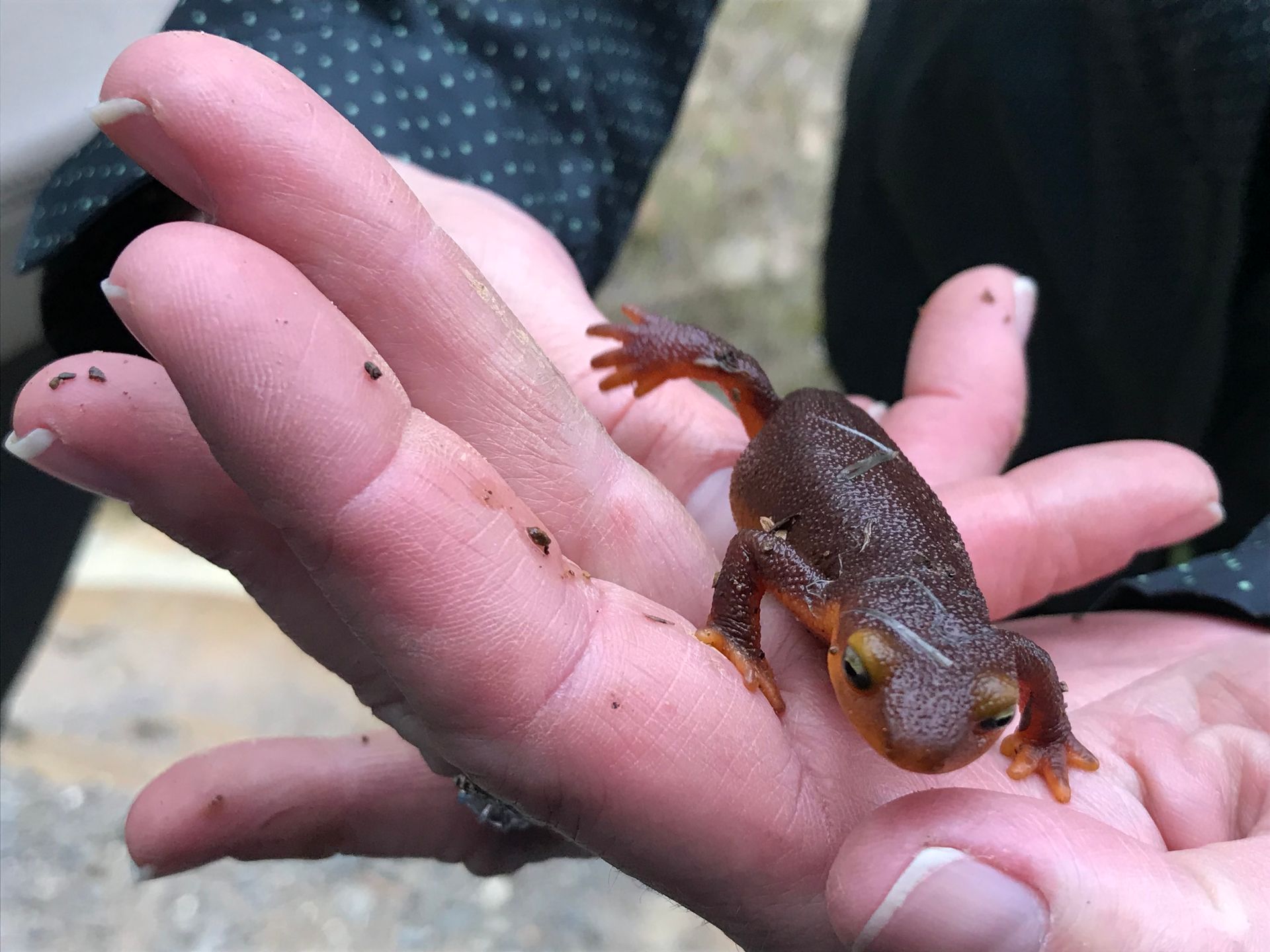Monumental Questions - Tell me More About California Newts

California Newt (Taricha torosa) on Molok Luyuk
California newts (Taricha torosa) are endemic to California – they are found in California and nowhere else on earth! They can be found below 6000’ in the southern Sierra Nevada foothills, the Peninsular Ranges of San Diego County, and in the Coast Ranges from central Mendocino County to northern San Diego County. They prefer valley-foothill hardwood and hardwood conifer ecosystems as well as coastal scrub and mixed chaparral. They can be found throughout the Berryessa Snow Mountain National Monument region.
These medium-sized newts (5 to 8 inches from nose to tail) are usually seen during the day in their “terrestrial” or non-breeding phase. During this phase, the newts have rough, grainy skin which is yellow/brown to dark brown on their backs and sides and pale yellow to orange bellies. During the breeding season, they can cover large distances while migrating to water. Some newts have been seen up to two miles from their previous pond! It is not uncommon to see large numbers of newts crawling to new breeding sites during or shortly after rains. When they reach water to breed, adult males develop smooth skin and a flattened tail. Additionally, the bottoms of their feet develop rough nuptial pads to aid in holding onto females. During the dry season, most spend their time in moist habitats – under woody debris, rock crevices, animal burrows – while some populations have been known to remain aquatic.
The larvae are aquatic. Females lay egg masses on vegetation near the surface. If the water rises or drops significantly, the eggs will die. Each female lays three to six masses of eggs, each mass with seven to forty-seven eggs! The breeding season lasts six to twelve weeks and varies depending on the amount of rain and where the newts are breeding: late December to February for newts that lay their eggs in ponds, reservoirs, or sluggish pools in streams; March to April (or after flooding has receded) for populations that breed in streams.
Adult newts have poisonous skin secretions containing tetrodotoxin, a powerful neurotoxin. This toxin is also present in egg masses and embryos but not in larvae. This toxin can cause death in many animals if eaten in sufficient quantity. The toxin can also be ingested through a mucous membrane or cut, so be careful if handling newts. Despite this toxin, many animals predate on California newts including gartersnakes and Great Blue Herons. Adult newts will also eat larvae.
Adults and larvae do not compete for food – they fill separate niches. Adults eat invertebrates, worms, snails, slugs, sow bugs, insects, amphibian eggs and larvae, and fish eggs. Newt larvae feast on small aquatic invertebrates and decomposing organic matter.
California newts face many threats. Habitat loss – wetlands removed for development – remove breeding grounds for the newts. Introduced species like bullfrogs, mosquitofish, and crayfish will eat larvae as well as adult newts. Climate change is impacting newts through more frequent and longer droughts and changing weather patterns. Wildfires can have a negative impact by increasing sedimentation filling in pools and streams used for breeding.
More information can be found on californiaherps.
-Nate Lillge (nlillge@tuleyome.org)
Tuleyome Adventures Coordinator and Activities Leader
Certified California Naturalist
RECENT ARTICLES






